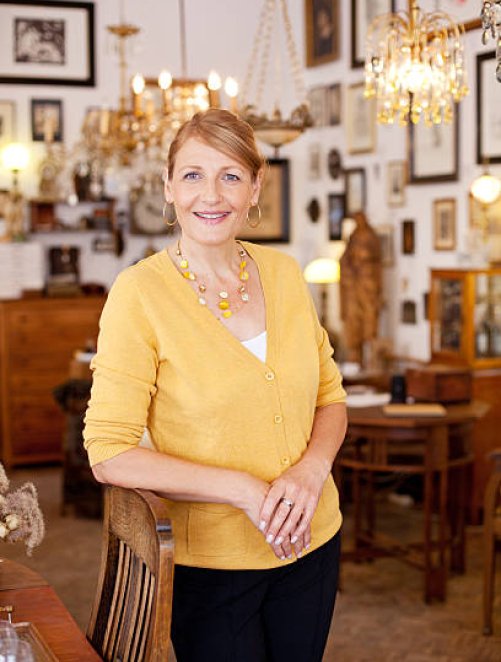





Hummel Figurine 20 - Little Shopper (096/)
German grandmother's collection
4 inches
Inherited
Yes


Hi Francesca,
Thank you for contacting Mearto with your appraisal inquiry.
Hummel figurines are a popular line of porcelain collectibles that depict children in various endearing and nostalgic scenes. They are named after Sister Maria Innocentia Hummel, a German Franciscan nun and artist who created the original artwork that inspired the figurines.
The history of Hummel figurines dates back to the early 20th century. In the 1930s, Sister Maria Innocentia Hummel's artwork caught the attention of Franz Goebel, the owner of a porcelain company in Germany. Goebel recognized the charm and appeal of Hummel's illustrations and sought to transform them into three-dimensional figurines.
The first Hummel figurines were introduced in 1935. They were made of porcelain and featured hand-painted details. The figurines depicted children engaged in various activities like playing instruments, gardening, reading, or simply engaging in innocent play. Sister Hummel's artwork emphasized the purity and simplicity of childhood, and these qualities were beautifully captured in the figurines.
Hummel figurines gained widespread popularity, both in Germany and internationally, and became highly collectible. They were especially beloved in the United States, where they found a large and enthusiastic market. The figurines were admired for their intricate craftsmanship, attention to detail, and the emotional connection they evoked.
Collectors often focused on acquiring specific figurines or completing sets, and while rare or discontinued pieces can become highly sought-after and valuable, the vast majority of figurines remain modestly valued.
It's worth noting that in 2009, the Goebel company announced that it would cease production of Hummel figurines due to financial difficulties. However, the trademark rights and production were subsequently acquired by the Manufaktur Rödental company, ensuring that new Hummel figurines continue to be made to this day.
Hummel figurines remain a beloved collectible for enthusiasts around the world. Their timeless appeal, nostalgic charm, and association with the innocence of childhood have made them enduring treasures for many collectors. Whether you appreciate them for their artistic value or sentimental connection, Hummel figurines continue to capture the hearts of both new and seasoned collectors.
Like most Hummel figures that sell at auction these days, the "Little Shopper" figurine in this size usually sells for between $20-30.
Based on the photos and information provided, and subject to examination, this is:
A vintage MI Hummel painted porcelain "Little Shopper" figurine
Made by Goebel, West Germany, Model #096, bearing the underglaze TMK3 mark in use from 1960-1972
Depicting a young girl in a skirt with dirndl top, a basket looped over her right arm, on a circular base. Marked underneath 096, Stylized Bee or TMK-3 Mark, "W.Germany"
4 inches
CONDITION: appears to be in good condition
PROVENANCE: inherited
$20-30*
*represents a fair-market value for auction purposes; retail or asking price may vary.
Please let us know if you have additional items to appraise, or questions/concerns, and thank you again for using Mearto.
~ Delia
Hi Francesca,
Fair market value is the secondary market and what items would bring if sold at auction.
Retail value is the primary market and is always higher than the Fair Market Value.
Does that answer your question?
Delia








.jpg)
Hi Delia, What is the difference between retail and Fair Market Value? According to the appraisal, the collection's retail value is $1,310 but the midrange FMV is only $948. Does retail suggest that certain items have intrinsic value that isn't reflected in FMV (e.g., some items are more sought after?)? Thank you. Francesca